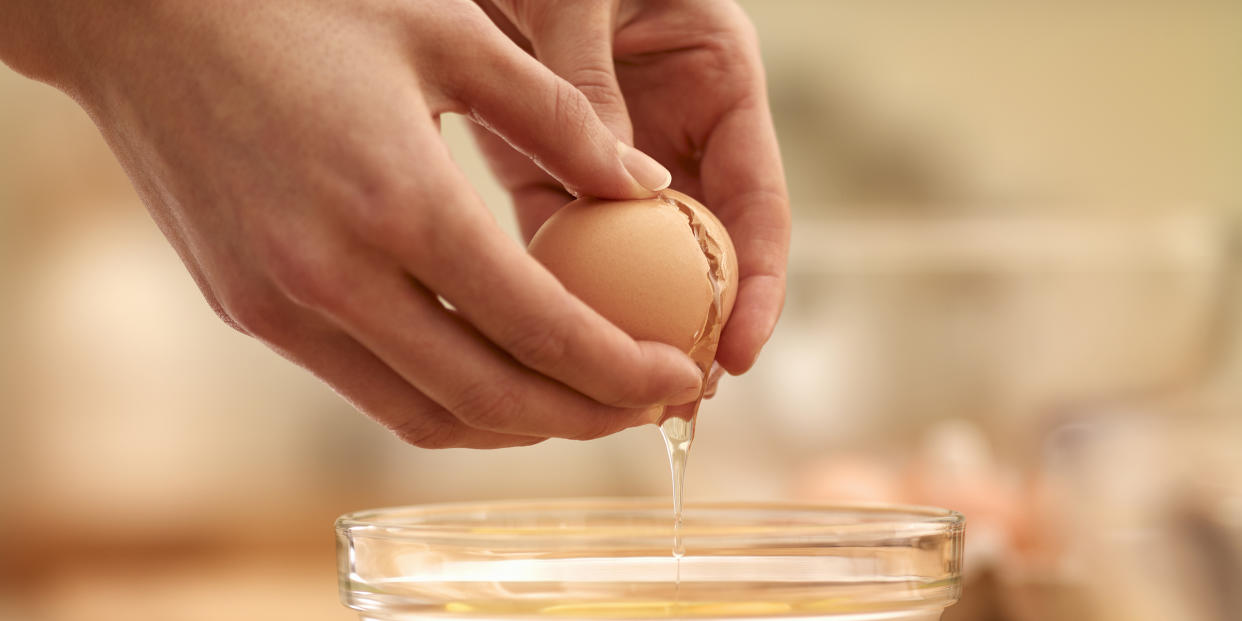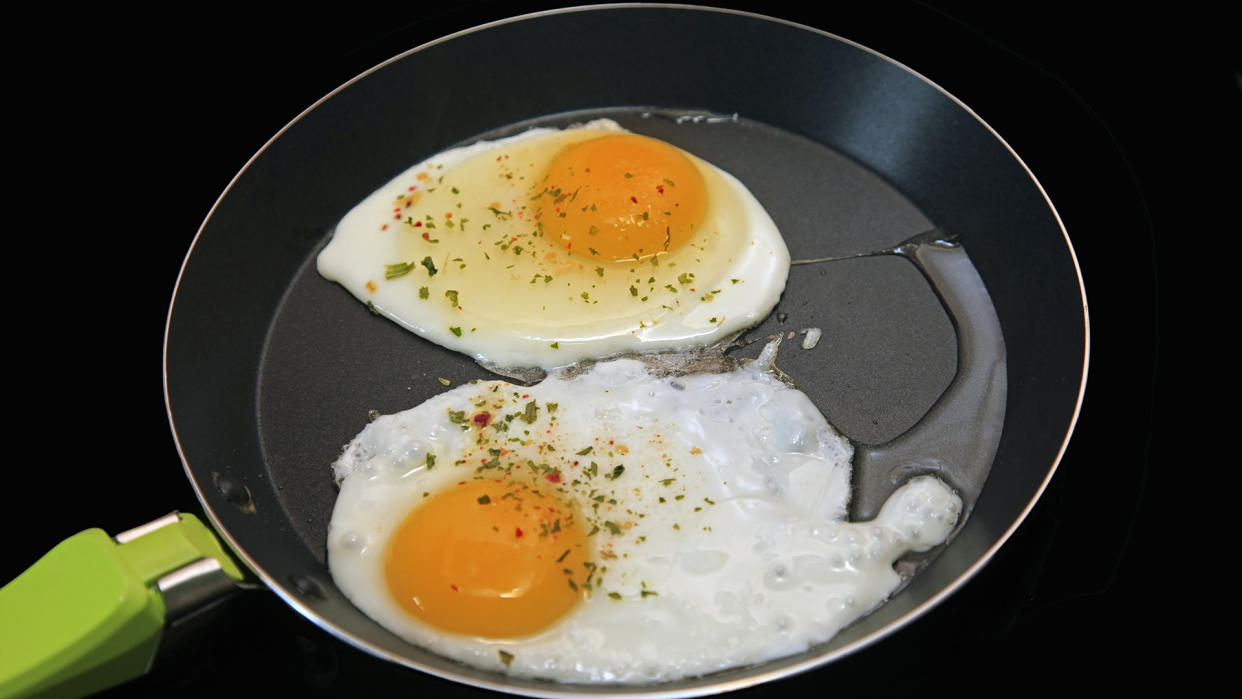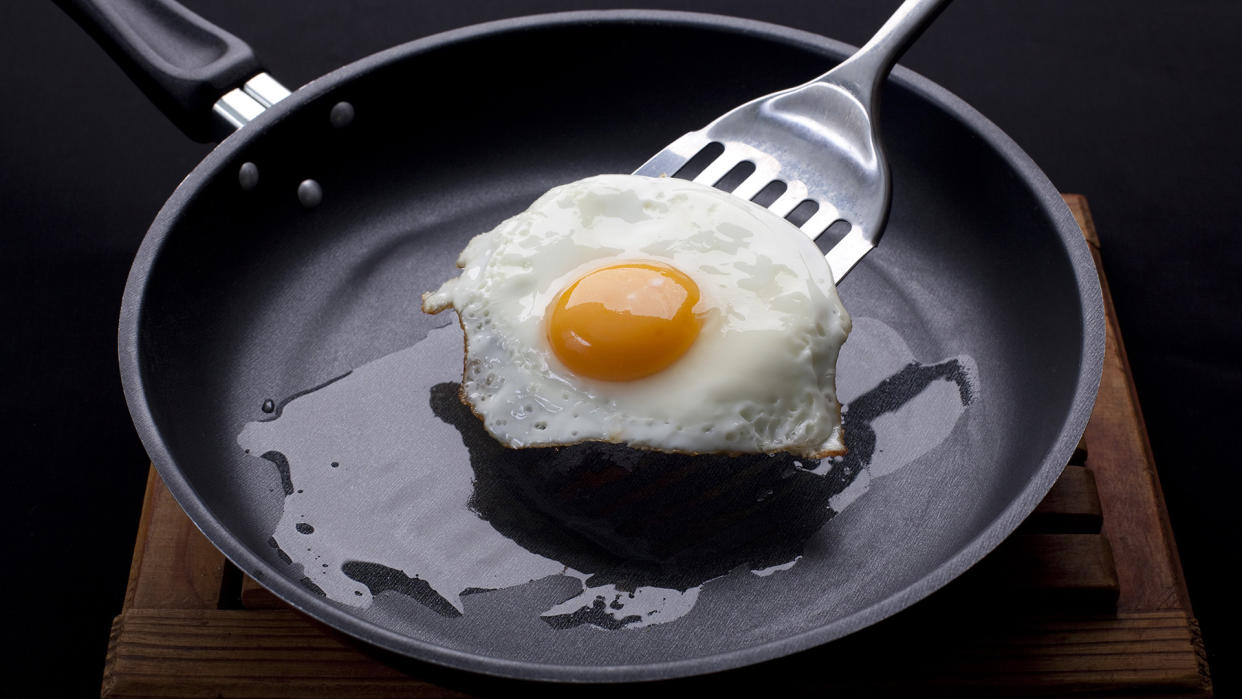Make perfect fried eggs with this 1 simple trick
Frying an egg may sound like a pretty basic cooking skill, but it can also be pretty easy to screw up. How does one achieve perfectly cooked yolks without burning the whites to a crisp?
According to frequent TODAY guest and Food & Wine's culinary director Justin Chapple, the trick to achieving a perfect fried egg might be as simple as using something every home cook has in their kitchen: water.
Since this technique sounded almost too good to be true, TODAY Food turned to Food Network's "Cutthroat Kitchen" veteran chef Michael Scipione to see if adding water to a fried egg while it cooks can really make a difference.

While the "perfect" fried egg is subjective (some folks can't stand a runny yolk, while others may run for the hills if an egg is overdone), for our purposes, let's assume a nicely fried egg is one that is evenly cooked with an unbroken, whole yolk and whites that haven't burned but are totally set. And while many people may adore the super crispy edges that come by using only oil (if so, this technique is for you!), using water allows you to cut down on fat and calories, and the result tends to be more uniform so the egg is totally Insta-worthy.
While Scipione's technique is a little different than Chapple's, he assured us that fried-egg glory will be yours if you follow these simple steps.
Related: David Chang may be a professional chef but he also loves a good microwave shortcut.
"Frying an egg in water is similar to making poached eggs for eggs Benedict," Scipione explained. He said that he first learned of this method when he was about 12 years old.
First, bring a half inch of water and one teaspoon of white vinegar to a boil in a shallow skillet. Scipione adds vinegar because it prevents the egg whites from dispersing throughout the water while cooking. He also adds a pinch of salt, which is optional, but will help enhance the flavor of the eggs. Then reduce the water and vinegar until the liquids start to simmer.

Next, crack your egg on a flat surface and place it in a small bowl. Scipione recommends only cooking one or two eggs at a time to ensure that they don't run together and will cook up evenly. Then, gently slide the egg out of the bowl into the simmering liquid.
"This simulates frying, not poaching," said Scipione, who added that it's important not to stir the water since it will disturb the shape of the eggs.
Let the egg(s) simmer for two to four minutes, depending on your desired level of doneness. If you want a more well-done egg yolk, use a spoon to gently baste the egg yolk with the simmering vinegar-water, taking care not to disturb the egg whites.
Finally, remove the egg from the simmering water with a spatula. Since the water will slide off the egg as it is lifted out, there's no need to drain it.

Of course, every technique takes a little practice, so if you do end up breaking a yolk or the egg doesn't turn out perfectly the first time, don't sweat it.
Sunny-side up and scrambled eggs still taste just as great on tricked-out avocado toast.






